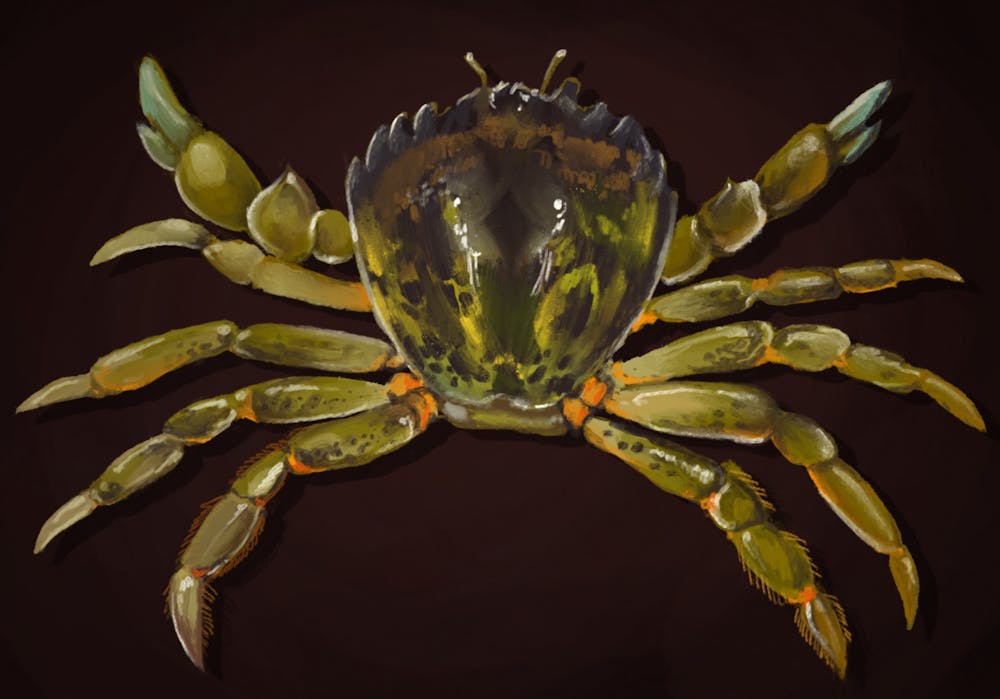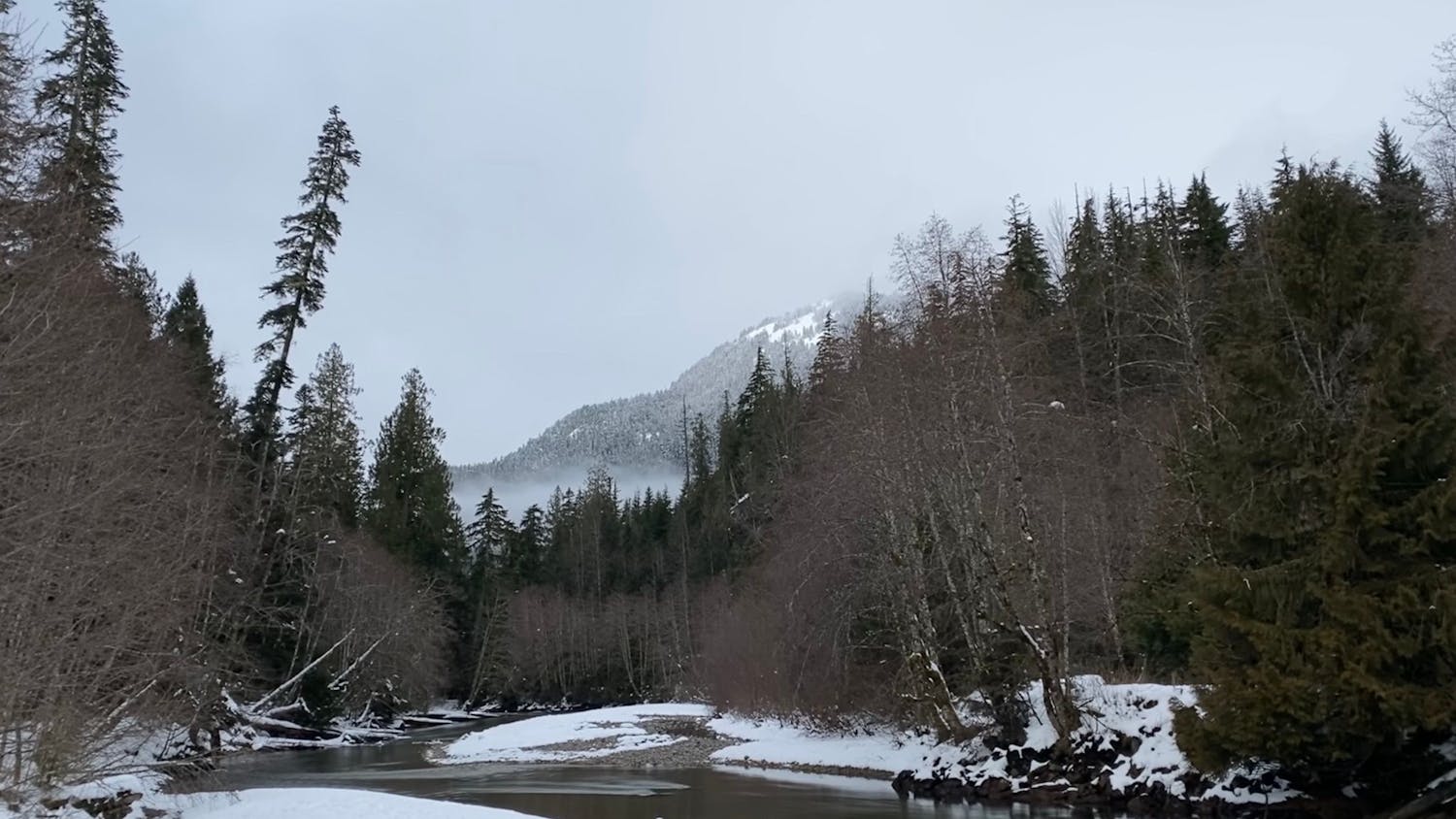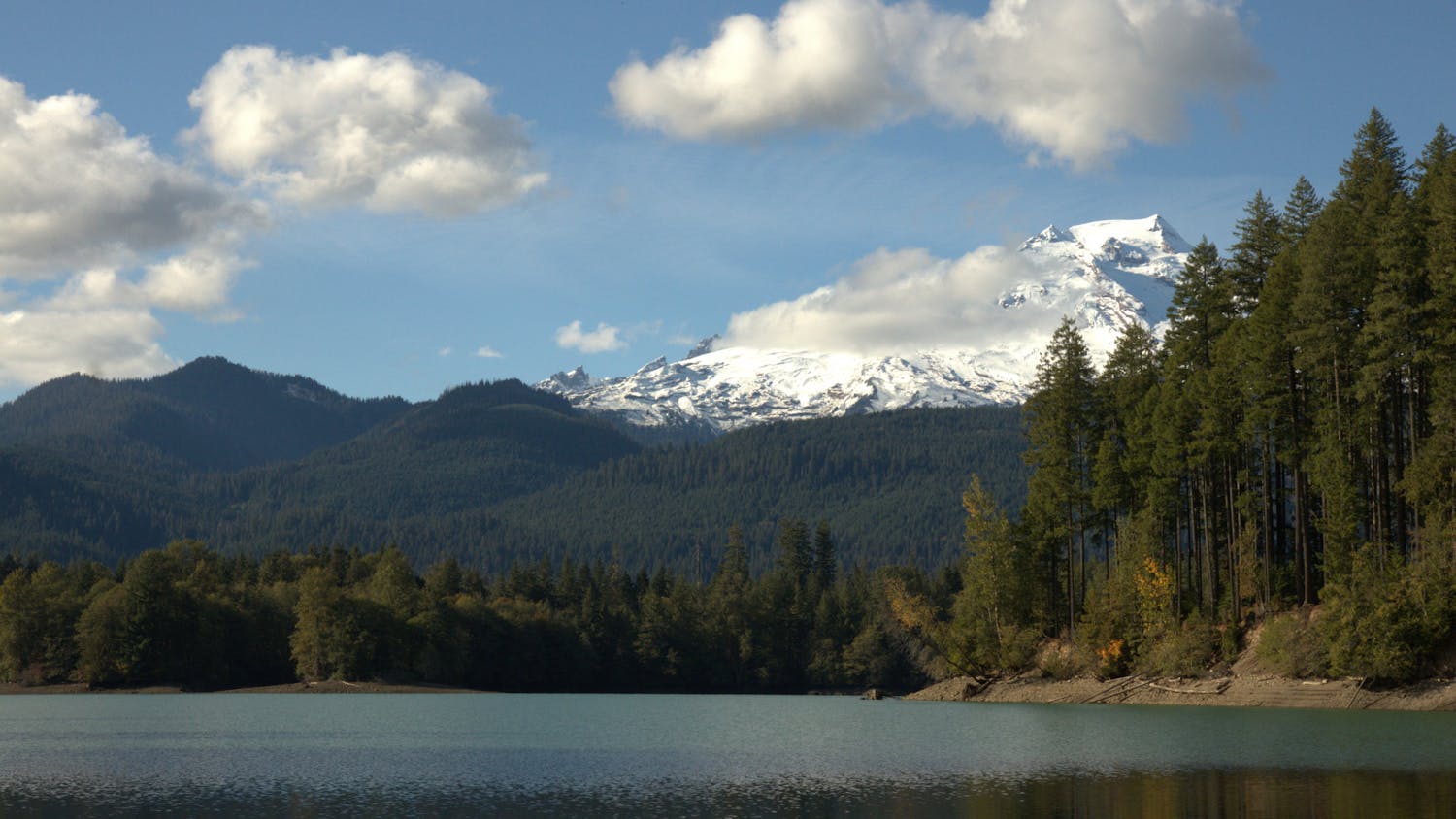European green crabs, Carcinus maenas, are considered a level one invasive species in Washington and are spreading across the Pacific Northwest.
Green crabs, also known as “shore crabs,” “beach crabs” or “raving mad crabs,” are native to the Atlantic Ocean and range from the East Coast to parts of Europe and Africa.
Bill Dewey, director of public affairs at Taylor Shellfish, said they are concerned about the green crabs. The green crabs negatively affect the fishing industry, specifically shellfish and Dungeness crab populations.
“They have devastated on the east coast of the U.S. They’ve devastated the soft shell crab population in Maine,” he said.
The crabs use shellfish as a food source, using their strong pinchers to break them open and get the meat out of them. Dewey said that the crabs are very pugnacious and can survive in high temperatures and low salinity waters. With rising numbers of green crabs, they have made preparations.
“We’ve trained our crews to be able to identify them and keep an eye out for them while picking oysters out in the bay,” Dewey said. “We found our first ones in January 2019 and have followed up with putting out traps. Over the last two summers, we have caught just under 200 of them.”
Taylor Shellfish catches oysters, clams, mussels and more for customers in the Pacific Northwest. The company relies on healthy ecosystems to farm these shellfish and green crabs are quickly becoming a threat to that ecosystem and their shellfish.
European green crabs aren’t native to the Pacific Northwest. The first sightings weren’t until 2016.
Jeff Adams, marine ecologist at the Washington Sea Grant, said green crabs had migrated a long way.
“Green crabs were introduced into San Francisco Bay, possibly as a hitchhiker in live bait shipments from the eastern U.S.,” Adams said. “Once established in large numbers there, strong ocean currents were able to move larvae all the way up the coast to Oregon, Washington and British Columbia before they matured enough to need to settle.”
Green crabs are infesting multiple locations in Washington, including the Lummi Sea Pond.
“The Lummi Sea Pond is a top priority because we want to reduce the potential for the larva [green crabs] to spread into the rest of the Puget Sound,” Gunnel said.
Green crab larvae will drift further south into the Puget Sound without a quick effort to stop the species.
“When you’ve got a population that’s exploded at the Lummi Sea Pond, it increases the potential for larva disruption,” Gunnel said.
One positive is that the local tidal currents are working against the green crabs, making it harder for them to reach Puget Sound.
Despite the threat, traps are an effective way to catch the invasive species and stop the population from thriving.
Chase Gunnel, a manager at the Washington Department of Fish and Wildlife, said they primarily use three different types of traps.
“We use a minnow trap, which is used to catch small species, and it works all right,” he said. “There’s also a pitfall trap, which is essentially a bucket that the crabs drop down into to escape the tide and can’t get back out of. The primary trap we use is a modified shrimp trap. It works really well for green crabs because it has a small mesh size.”
Emily Grason, marine ecologist for the Washington Sea Grant, said the green grabs are not closely related to Dungeness crab. Dungeness crabs are native to the west coast and heavily relied on by fisheries.
“Dungeness crabs are more closely related to a number of other native species like red rock crab,” she said. “European green crabs are in the family that includes swimming crabs.”
Green crabs are predators that prey on other organisms including native species.
There is the hope of slowing down the expanding green crab population.
“It looks like if you jump on them and put an intensive effort towards control trapping, you can get them below a breeding population and get ahead of them,” Dewey said.
Click here to find more information about European green crabs, report a sighting or join the crab volunteer team.

Emily Paulson (she/her) is a senior reporter for The Front this quarter. She is a sophomore currently pursuing a double major in journalism specifically news/ed track and in accounting. Emily focuses her reporting on the Bellingham waterfront and other city news stories. Outside of journalism, Emily plays on the Western softball team, enjoys watching sports, spending time with friends and working on her podcast.
Her instagram is @empaulson22






